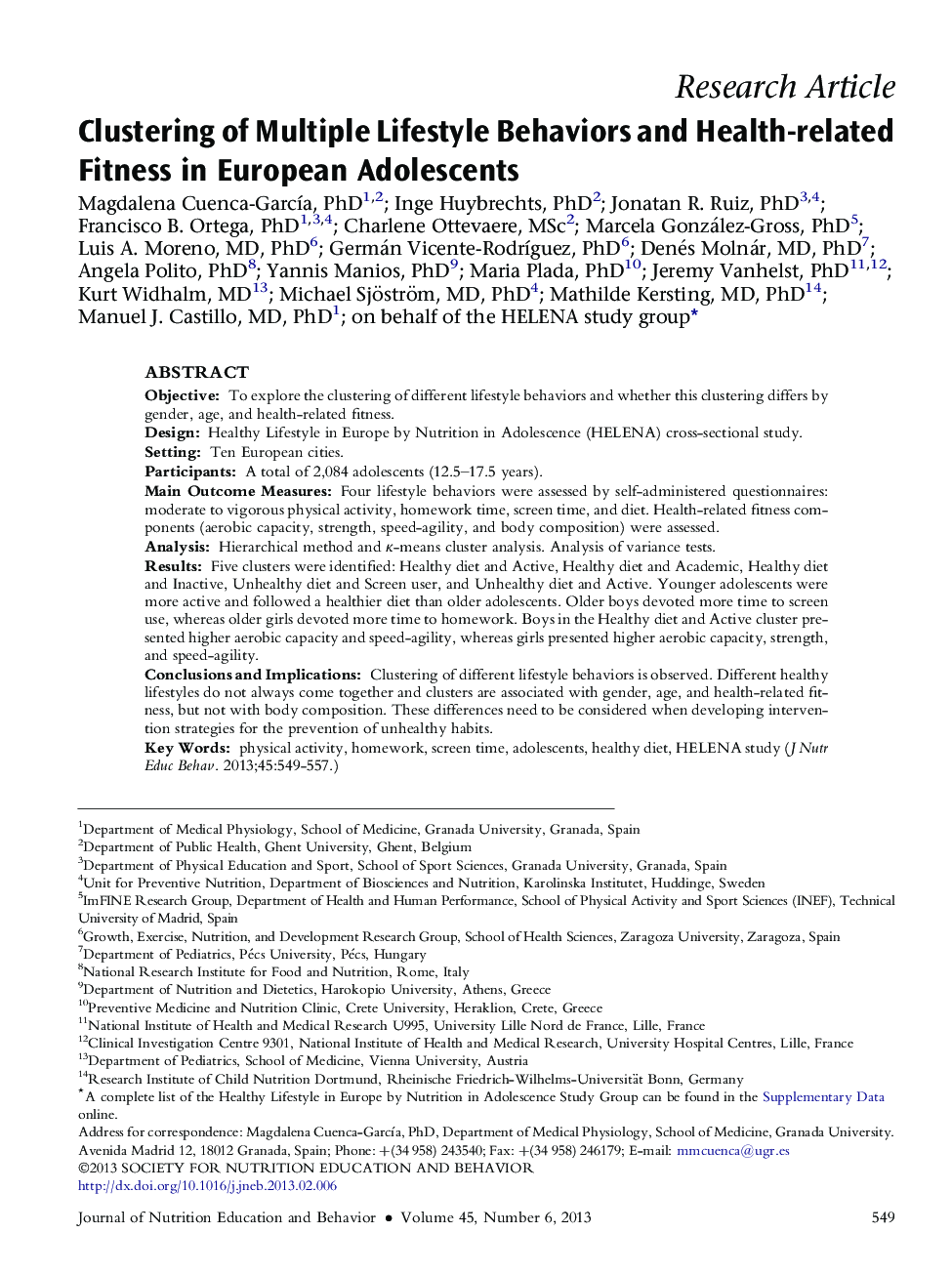| Article ID | Journal | Published Year | Pages | File Type |
|---|---|---|---|---|
| 361999 | Journal of Nutrition Education and Behavior | 2013 | 9 Pages |
ObjectiveTo explore the clustering of different lifestyle behaviors and whether this clustering differs by gender, age, and health-related fitness.DesignHealthy Lifestyle in Europe by Nutrition in Adolescence (HELENA) cross-sectional study.SettingTen European cities.ParticipantsA total of 2,084 adolescents (12.5–17.5 years).Main Outcome MeasuresFour lifestyle behaviors were assessed by self-administered questionnaires: moderate to vigorous physical activity, homework time, screen time, and diet. Health-related fitness components (aerobic capacity, strength, speed-agility, and body composition) were assessed.AnalysisHierarchical method and κ-means cluster analysis. Analysis of variance tests.ResultsFive clusters were identified: Healthy diet and Active, Healthy diet and Academic, Healthy diet and Inactive, Unhealthy diet and Screen user, and Unhealthy diet and Active. Younger adolescents were more active and followed a healthier diet than older adolescents. Older boys devoted more time to screen use, whereas older girls devoted more time to homework. Boys in the Healthy diet and Active cluster presented higher aerobic capacity and speed-agility, whereas girls presented higher aerobic capacity, strength, and speed-agility.Conclusions and ImplicationsClustering of different lifestyle behaviors is observed. Different healthy lifestyles do not always come together and clusters are associated with gender, age, and health-related fitness, but not with body composition. These differences need to be considered when developing intervention strategies for the prevention of unhealthy habits.
